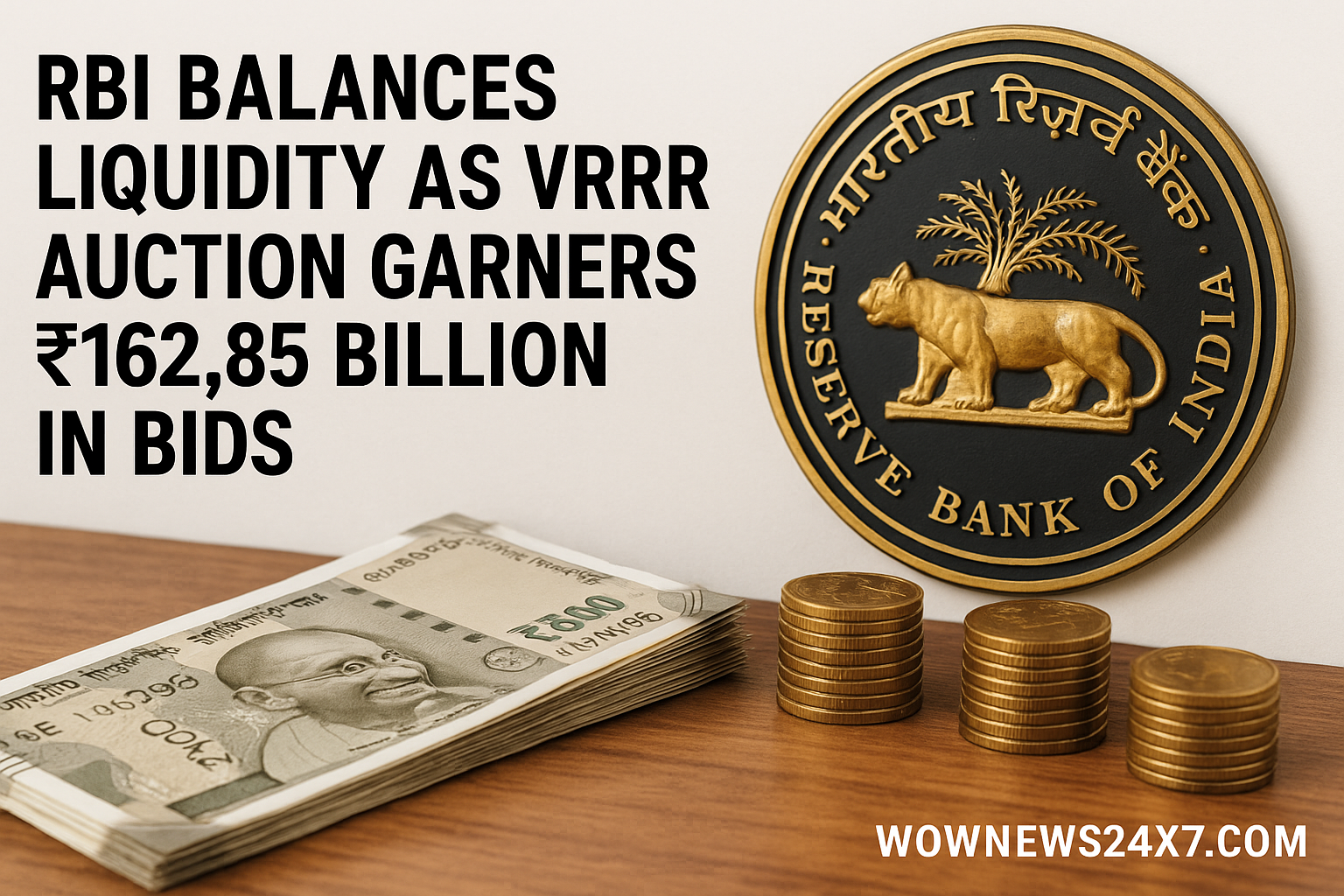In its recent two-day Variable Rate Reverse Repo (VRRR) auction, the Reserve Bank of India received bids worth ₹162.85 billion against the notified amount of ₹250 billion, accepting the full ₹162.85 billion at a cut-off rate of 5.49%. The weighted average rate was set to align with market liquidity dynamics.
The Reserve Bank of India (RBI) conducted a two-day Variable Rate Reverse Repo (VRRR) auction to manage surplus liquidity in the banking system. While the RBI had notified an auction target of ₹250 billion, bids to the tune of ₹162.85 billion were received and accepted. The weighted average cut-off rate was set at 5.49%, signaling the market-driven nature of these liquidity absorption auctions.
VRRR auctions are a key monetary policy tool used by RBI to align short-term money market rates with its policy repo rate, currently at 5.50%. By accepting bids at market-driven rates, the RBI seeks to absorb excess funds from banks just above the Standing Deposit Facility (SDF) rate, ensuring overnight liquidity remains within the Liquidity Adjustment Facility (LAF) corridor.
Market Dynamics Behind the Auction
The subdued response to the notified target—just about 65% of bids received—reflects comfortable liquidity conditions in the banking system, with robust government spending and favorable fiscal inflows. Market participants have observed that banks are cautious about parking funds above call money rates in tight monetary conditions, leading to partial bidding in VRRR auctions.
This auction also followed recent RBI moves including variable rate repo auctions to fine-tune overnight rates, which recently hovered close to the policy repo rate. With surplus liquidity around ₹2-2.5 trillion, RBI is actively using VRRR tools to maintain stability in overnight money markets.
Key Highlights
-
RBI conducted a two-day VRRR auction with notified amount of ₹250 billion.
-
Total bids of ₹162.85 billion received and accepted.
-
Cut-off and weighted average rate set at 5.49%.
-
Auction aimed at absorbing surplus liquidity and managing short-term interest rates.
-
Market response reflects current comfortable liquidity and demand-supply dynamics.
Outlook
RBI’s strategic use of VRRR auctions continues to play an important role in liquidity normalization and aligning money market rates with monetary policy objectives. Analysts expect further VRRR auctions as liquidity conditions evolve, ensuring stable benchmarks for the financial system.
Sources: Business Standard, Economic Times, RBI press releases
